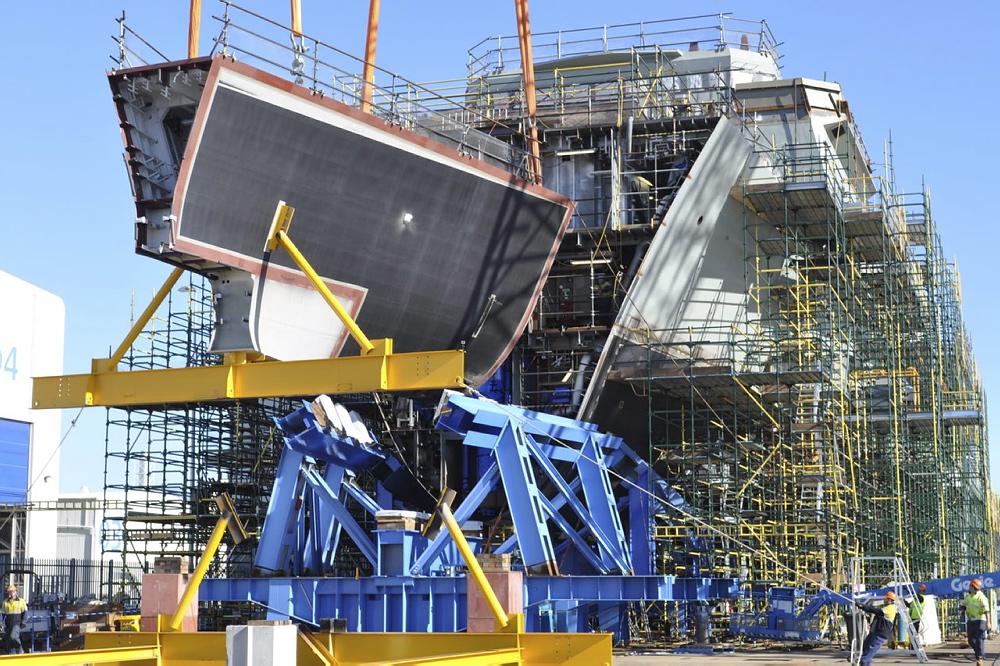DMO: industry’s view not accurate
Posted By Mark Thomson on February 7, 2014 @ 06:00
 [1]According to the Australian Industry Group (AIG), the headcount at the Defence Materiel Organisation (DMO) has grown three-fold over the past decade from 2,500 people to 7,500. Armed with this remarkable statistic, in their submission [2] (PDF) to the National Commission of Audit [3] they’ve called for DMO staffing to be cut ‘perhaps by half’. For a government on the lookout for budget savings that’s likely to sound attractive, especially with a Defence Minister on the record bemoaning the high number of civilians in Defence [4].
[1]According to the Australian Industry Group (AIG), the headcount at the Defence Materiel Organisation (DMO) has grown three-fold over the past decade from 2,500 people to 7,500. Armed with this remarkable statistic, in their submission [2] (PDF) to the National Commission of Audit [3] they’ve called for DMO staffing to be cut ‘perhaps by half’. For a government on the lookout for budget savings that’s likely to sound attractive, especially with a Defence Minister on the record bemoaning the high number of civilians in Defence [4].
But before they start handing out pink slips to the folks at DMO, it’s worth pausing to check the numbers. Has the number of people in DMO really increased by 5,000 since 2004? While it’s impossible to be absolutely precise because of Defence’s habitual lack of disclosure, the answer is unequivocally ‘no’.
To put the question in perspective, it’s worth tracking the evolution of Defence’s materiel acquisition and support workforce over time. Back in the mid-1990s, there were around 20,000 people employed on acquisition and logistics—mostly in the Services. By the time of the Defence Reform Program in 1997-98, outsourcing had whittled the number down to around 13,700, including 11,600 in Support Command and 2,100 in the Acquisition Program.
When the DMO was formed in June 2000, its workforce subsumed the then 1,900 people in the Acquisition Program and the bulk of the 8,500 personnel in Support Command—yielding a workforce of around 10,000. Further outsourcing saw the DMO workforce shrink to around 6,413 in 2004-05 when it became a prescribed agency. At present, DMO is budgeted for a workforce of 7,100 but is likely to achieve a result closer to 6,500 given recent staff reductions.
Thus, not only is the claim of a three-fold increase in personnel baseless, but over the past twenty years the number of people employed by Defence on materiel acquisition and support has trended downwards as a result of outsourcing. Indeed, compared with the early 1990, there’s around a third as many people on the payroll as there used to be.
Erroneous and outrageous claims about DMO are nothing new. The organisation has long been the whipping boy of the media, defence industry and politicians. Almost always, the broader context within which DMO operates is lost in the process. Two points are worth making.
First, DMO is situated between a rock and a hard place. On one side, it’s often tasked by the military to acquire cutting-edge capabilities which inevitably involve substantial risk. And the cost and schedule estimates that emerge from the capability development process set them up for failure. On the other side, DMO has to deal with defence firms which routinely over-promise and under-deliver—one of the prime sources of the errors in the estimates DMO has to work with. Nevertheless, it’s usually DMO that gets left holding the can when things go bad—irrespective of how risky the project was to begin with, or how poorly industry performed after contract. A singular focus on DMO fails to acknowledge the chain of players who together determine the success or failure of defence acquisitions.
Second, it would be naïve to think that industry doesn’t has a vested interest in seeing DMO reduced in capacity and influence. What a lovely day in the office it would be for a defence firm if it didn’t have to deal with the onerous paperwork and multiple checks and balances imposed by DMO. While there’s every reason to try and streamline DMO processes and reduce unnecessary transactions, there’s a limit to what can (and should) be prudently done. The seemingly ponderous bureaucracy of defence procurement serves a dual purpose—to protect the taxpayer from being taken for a ride and to ensure that the ADF gets what it needs. I for one wouldn’t want to see a multi-billion dollar defence contract scribbled on the back of a restaurant napkin (or, perhaps more likely, a beer mat at a trade show).
It’s understood that the government plans to undertake a review of DMO this year, in tandem with the development of the White Paper and ‘first principles’ review of the Defence business model. On the whole, it’s a sensible program for a new government to adopt. There’s undoubtedly room for improvement in a large and complex organisation such as DMO.
But care will be needed. It’d be a grave error to ignore the critical roles played by Defence’s capability planners and defence industry in defence procurement. Equally, while the views of defence industry should be actively sought and carefully considered, it shouldn’t be forgotten that industry has a vested interest in denuding DMO’s capacity to negotiate and oversee contracts.
Lest you think I’ve become an uncritical supporter of the DMO, I’ll share my own thoughts here next week. DMO’s own response to the AIG submission is here [5].
Mark Thomson is senior analyst for defence economics at ASPI. Image courtesy of the Royal Australian Navy [6].
Article printed from The Strategist: https://aspistrategist.ru
URL to article: /dmo-industry-view/
URLs in this post:
[1] Image: https://aspistrategist.ru/wp-content/uploads/2014/02/AWD_construction.jpg
[2] their submission: http://www.aigroup.com.au/portal/binary/com.epicentric.contentmanagement.servlet.ContentDeliveryServlet/LIVE_CONTENT/Policy%2520and%2520Representation/Submissions/Budget/2013/Federal/Ai%2520Group%2520Commision%2520of%2520Audit%2520Nov%25202013.pdf
[3] National Commission of Audit: http://www.ncoa.gov.au/
[4] bemoaning the high number of civilians in Defence: http://www.theaustralian.com.au/national-affairs/policy/coalition-flags-civilian-defence-cull/story-e6frg8yo-1226484966314
[5] here: http://www.defence.gov.au/dmo/Newsitems/5feb14_ceo.cfm
[6] Royal Australian Navy: http://news.navy.gov.au/en/Jul2013/Fleet/79/Consolidation-of-final-keel-block-for-first-Air-Warfare-Destroyer.htm#.UvMs37T3tI1
Click here to print.